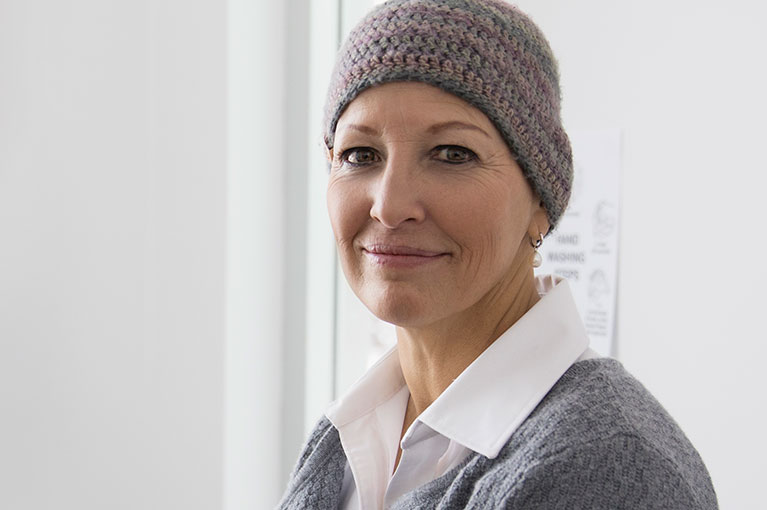In her first 20 years of her practice, Maria Bell, M.D., says there were just a handful of drugs approved by the FDA to treat ovarian cancer.
“But in the past three years,” says Dr. Bell, a gynecological oncologist at Sanford Health, “there’s been another 10 to 15 treatments of ovarian cancer that are showing a lot of promise.”
These new therapies and medications — some in final clinical trials before FDA approval — are improving women’s remission times and cure rates, as are refined treatment and maintenance recommendations from providers.
Making the invisible visible
Dr. Bell explains that ovarian cancer evades the immune system by essentially creating a shield that doesn’t let the lymphocytes, which fight cancer, see the cancer cells.
The cancer spreads largely undetected, and symptoms are fairly common with other less severe conditions, so it’s often not diagnosed until the late stages.
“There’s a class of new immune-modulating drugs that make the cancer cells visible to the immune system,” Dr. Bell says, which help make chemotherapy treatments more effective.
These medications have been FDA approved to treat other cancers, and are currently in several clinical trials specifically to treat ovarian cancer.
“They’ve had good results so far in both treatment and maintenance therapies,” Dr. Bell says.
Once the trials are complete and their studies’ findings are reviewed, Dr. Bell says FDA approval for these immune-modulating medications is likely.
Slowing down cancer, and keeping it at bay
“After treatment and chemotherapy, in the past we would watch and wait for the cancer to recur, which most of the time it did,” Dr. Bell says. “But with what’s called PARP inhibitors in maintenance therapy for ovarian cancer, we’re seeing much longer remissions and more cures.”
These new drugs stop the PARP (poly ADP ribose polymerase) enzyme in cancer cells, “which inhibits the cancer cell’s ability to repair DNA damage,” Dr. Bell says. “The inability to repair DNA damage leads to death of the cancer cell.” PARP inhibitors can be used in both treatment and maintenance settings.
“Before, ovarian cancer may recur in 12 to 18 months,” Dr. Bell says, “but with PARP inhibitors, it’s more like 24 to 36 months.”
Additional testing for more targeted treatments
An in-depth look at tumor cells can lead to more options for patients.
“Recently, we have been using more biopsies of tumors to do a molecular analysis so we can target specific drugs to the particular cancer in that tumor,” she says. “This deeper level of information allows us to get patients access to medications that wouldn’t otherwise be available.”
Dr. Bell also recommends all her patients with ovarian cancer have a genetic test done to see if they carry a BRCA gene mutation. If someone has a mutation in BRCA1 or BRCA2, they’re at a higher risk of developing hereditary breast and ovarian cancer. If someone with BRCA1 or BRCA 2 has already been diagnosed with ovarian cancer, they’re also at a higher risk of developing breast cancer—and vice versa.
A genetic test for these BRCA mutations can help get patients more targeted screenings in place, and give insight into whether other people in their family may be at risk of carrying this gene mutation that can lead to cancer.
“We have a very strong genetics team here at Sanford Health that helps with getting these patients screened for those mutations, and discussing next steps and treatment options,” Dr. Bell says. “I also have my patients meet with a genetic counselor to talk over how these results impact them and their families.”
Hope for the future
Dr. Bell feels encouraged with where treatment options are going for ovarian cancer patients.
“These new drugs are increasing cures and lengthening remissions,” she says. “And we’re getting access to more drugs that are showing promise for keeping the cancer at bay instead of watching and waiting for it to recur.”
Proactive screenings and genetic tests, targeted analysis and treatments, and new options being approved for use all equal one thing for ovarian cancer patients: Hope.
Read more
- Ovarian cancer symptoms, and why it’s hard to diagnose
- The role of genetics in breast and ovarian cancer
- Can at-home DNA tests predict cancer?
- What to know about genetic tests predicting breast cancer
…
